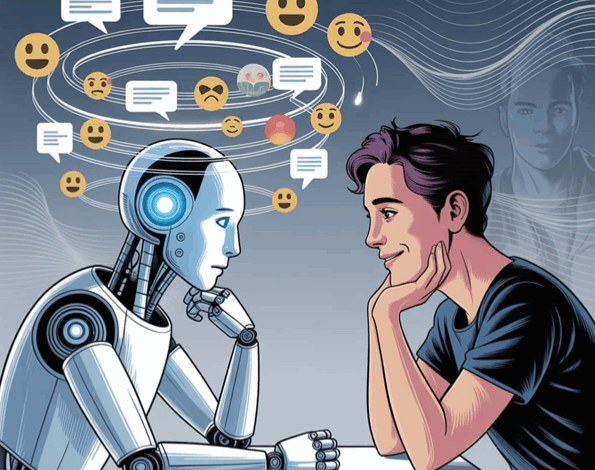
According to Altexsoft, a language model is a type of machine learning model trained to conduct a probability distribution over words. In other words, a language model is a system trained to predict the next word in a sentence.
Think of large language models (LLMs) like GPT, BERT, or Meta’s LLaMa as incredibly fast readers. They’ve consumed vast libraries of internet text, books, articles, code, and conversation. From this, they’ve learned how language usually works, how words tend to follow one another, and what structures appear in certain contexts.
But predicting language isn’t the same as understanding it.
Even in Linguistics, particularly in Generative Syntax, we know that language follows rules–but also that humans bend, break, and creatively remix those rules all the time.
A model like BERT might correctly identify the subject and object of a sentence, but it doesn’t understand why a passive construction was used instead of an active one, or what emotional weight that choice carried.
Take sarcasm, for example. “Oh, great. Another Monday.” A human hears the tone, sees the eye roll, and understands the real meaning. A language model may recognize the structure, but without contextual grounding, it often misses the point.
Another challenge is ambiguity. In English, “I saw her duck” could mean she avoided something–or that you saw her pet bird.
Humans resolve ambiguity using world knowledge, social cues, or even just intuition. Language models rely solely on patterns in training data, and if that data is skewed, sparse, or biased, the model inherits those flaws.
This is where multilingual models also falter.
Many low-resource languages lack the massive corpora required for training, leaving them underrepresented and inaccurately modeled.
Even code-switching–a natural, common feature in many multilingual communities can confuse models trained on monolingual, standardized datasets.
This is alarming because we’re building systems meant to talk to us, guide us, sell to us, and sometimes even comfort us. If a language model can’t handle nuance, tone, or diverse linguistic realities, it risks misunderstanding users at best and reinforcing harmful stereotypes or misinformation at worst.
Language strongly refers to identity, emotion, and context. And while language models are powerful, they still have miles to go in truly speaking like us.
Built-in Biases in AI Training Data
Language models learn from data. And that data reflects human conversations, news, entertainment, and digital culture. The good, the bad, and the dangerously biased.
One of the root causes of bias in AI, especially in Natural Language Processing, is that much of the training data is scraped from the internet, which is anything but neutral.
If a model ingests millions of documents that favor one worldview, stereotype, or dominant culture, it begins to reproduce that bias without understanding it.
Linguistically, we can trace part of this issue to lexical semantics, which focuses on word meanings and how context affects interpretation.
Words don’t carry universal, context-free meaning. “Bossy,” for example, is often used to describe assertive women, while men showing the same traits are described as “leaders.” If a model sees enough of these skewed associations in its training data, it learns to rewrite them, reinforcing social biases under the guise of intelligence.
Types of bias appear in many forms:
Gender bias: Language models have been shown to associate nursing with women and engineering with men, simply because that’s what the data reflects.
Racial and ethnic bias: Words like “Black” might get unfairly paired with negative sentiment, while “white” is associated with purity or safety.
Western-centric norms: Models often privilege English over other languages, and standard American or British English over non-native varieties or dialects. This erases voices and misrepresents global users.
The consequences go far beyond awkward outputs. They can influence hiring decisions, reinforce stereotypes, or skew public opinion.
A notable real-world case was Amazon’s experimental AI hiring tool that learned to favor male applicants because it was trained on resumes submitted over a ten-year period, most of which came from men.
The model began downgrading resumes that included the word “women’s,” like “women’s chess club,” and favoring more male-coded language.
Bias also warps tone perception across cultures. In some places, directness is considered confident. Elsewhere, it’s rude. Without cultural sensitivity or contextual understanding, conversational AI can come across as dismissive, inappropriate, or even offensive.
At the heart of it, these biases challenge identity. When a language model consistently misrepresents or marginalizes a group, it doesn’t just make a technical error, it sends a social message.
These biases don’t just affect what AI says, they affect who it listens to next.
Multilingual and Cultural Context Challenges
A language model might “know” how to say hello in 20 languages–but that doesn’t mean it understands the rules behind each of them.
One of the biggest setbacks in conversational AI is the difference between surface-level translation and cultural fluency. It might translate “it’s raining cats and dogs” into Spanish, but unless the model understands idioms as contextually bound rather than literal, it might render it into something confusing like a zoological emergency in Spain.
Here, lexical semantics plays a major role again. Words and phrases don’t exist in isolation; their meaning shifts based on cultural and situational context.
The English idiom “spill the tea” means gossip. A model trained to translate it word-for-word into Yoruba (tú tíi) would be abominably incorrect unless it understands the cultural intention behind the phrase.
And that’s just the semantics. Structurally, generative syntax adds another layer of complexity. For example, while English uses strict Subject-Verb-Object word order (“She eats rice”), languages like Japanese or Korean use Subject-Object-Verb (“She rice eats”). A model needs to recognize these deep structure rules–not just throw words around.
Then comes the issue of tone, something so woven into language that it often escapes explicit explanation.
Think of Japanese Keigo, the intricate system of honorific speech. Or Yorùbá respect terms, where (ẹ̀) is used to show deference to elders. These are tonal and morphological signals of power, politeness, and relationship.
This also boils down to Generative Phonology. In tonal languages like Yorùbá, changing tone changes meaning. For example, oko can mean “vehicle,” “husband,” or “farm,” depending on tonal inflection. If a model fails to grasp these pitch-based rules or applies the wrong one in a formal setting, it could accidentally turn a respectful phrase into an insult, or just nonsense.
Formality is another problem. A model might say “Hi” to a Japanese CEO when “Hajimemashite. Yoroshiku onegaishimasu” is more appropriate. Not because it doesn’t know the words, but because it doesn’t recognize social distance as a viable cue.
Most multilingual LMs are trained with an English-first mindset. They translate into other languages without understanding the why behind how those languages are used. So, even if a model can output flawless Italian or Arabic, it often misses the nuances; like when to speak casually, when to show reverence, and when silence speaks louder than words.
Humor, Sarcasm, and Emotional Intelligence
Stand-up comedians tell you humor needs timing, delivery, tone, cultural reference, and emotional intuition. That’s precisely why conversational AI still struggles with it.
Humor often leans on wordplay, double meanings, or timing–features that challenge even the most powerful language models.
Take rap lyrics for example: lines like Lil Wayne’s “Real Gs move in silence like lasagna” work because of an internalized understanding of phonology, cultural reference, and surprise. It’s funny not just because of the pun on the silent “G” but because it plays with expectations; a cognitive bias that requires nuance. To an LLM, however, this might seem like nonsense.
Then there’s sarcasm, which operates almost like anti-language. You say one thing but mean the opposite, and the clue lies in how you say it.
When Elon Musk tweeted “Twitter is the most fun thing ever!” during a controversy, humans picked up the irony instantly. A model, however, might reply, “Glad you’re enjoying your experience, Elon.” which is technically accurate but not appropriate.
LLMs don’t “feel” emotion, they predict emotion-like responses based on patterns in data.
They don’t sense tone, they decode it statistically. Which means when you toss in something emotional like a joke, an insult disguised as a compliment, or a sarcastic clapback, the model may either miss the punchline or become the punchline.
In linguistics, again, discourse goes beyond sentences, it’s about how meaning builds across turns, tones, and timing. In psychology, this mirrors the Theory of Mind: the human ability to infer others’ intentions, beliefs, or emotions. LLMs don’t have that. They can’t tell if you’re kidding or crying unless your words spell it out explicitly.
To bridge this gap, researchers are exploring future-forward strategies like:
Context-aware embeddings: recognizing meaning shifts based on social and conversational context.
Emotional tagging: labeling inputs not just for content but emotional tone.
Multimodal training: combining text with facial cues, voice inflection, or gestures which humans use naturally in conversation, but LLMs currently lack.
Without these upgrades, we’ll keep getting models that know all the words but miss the contextual or tonal meanings.
Designing with Empathy: What Creators and Brands Must Do Differently
Natural tone isn’t enough.
A great chatbot or voice assistant doesn’t just speak like a person, it responds like one who understands. That means going beyond first-level coherence to embed intent, emotional context, and cultural nuance.
Whether you’re designing onboarding flows or writing brand copy, always ask: How does this feel to someone reading it in Lagos? In Tokyo? In São Paulo?
To get there:
- Tools like OpenAI’s GPT-4o, Anthropic Claude, or Cohere’s Embed could help with emotion-aware embeddings.
- Test across cultural and linguistic backgrounds. Tools like UserTesting, Maze, or even simple A/B testing with diverse user bases can uncover things you probably missed.
- Hire or consult cultural experts–people fluent not just in languages but in rules.
Conclusion
Conversational AI has come a long way–but it still falls short on the things that make us human: context, culture, and emotion.
So what does this mean for us?
It means we can’t rely solely on large models and algorithms. We need linguistic insight, psychological nuance, and ethical clarity. And no matter how good the model is, that’s not something you can copy off the internet.
If we want AI to truly speak with us, we need to stop asking it to sound human and start helping it understand what being human means.




